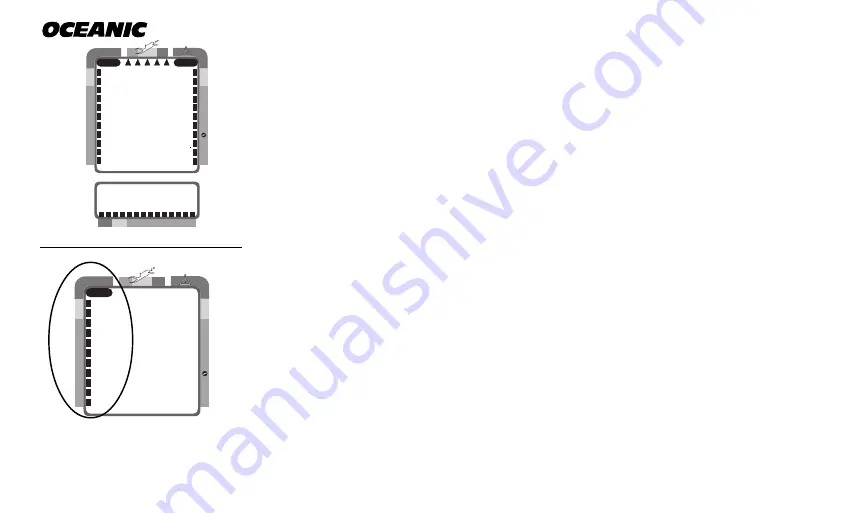
4
®
UNIVERSAL GRAPHIC DIVER INTERFACE
™
Four bar graphs referred to as the Universal Graphic Diver Interface
™
appear
around the perimeter of the screens (Fig. 3). These segmented bar graphs are
located next to green, yellow, and red color coded portions of the peripheral
decal that denote normal, caution, and danger zones, respectively.
When underwater, you can quickly focus on the bar graphs to make sure that
they are in the green. You can quickly verify that you're not getting too close
to the no decompression limit or the limit for exposure to oxygen (accumula-
tion), or ascending too fast.
Tissue Loading Bar Graph
™
The Tissue Loading Bar Graph
™
(TLBG) represents nitrogen loading (Fig. 4),
showing your relative no decompression or decompression status. As your
depth and elapsed dive time increase, segments will add to the graph begin-
ning in the lower left portion of the screen. As you ascend to shallower depths,
this bar graph will begin to recede, indicating that additional no decompres-
sion time is allowed for multilevel diving.
The Tissue Loading Bar Graph monitors 12 different nitrogen compartments
simultaneously and displays the one that is in control of your dive. It is di-
vided into a green No Decompression zone (NO DECO), a yellow Caution zone
(C.Z.), and a red Decompression zone (DECO). The bar graph gives a visual
Fig. 3 - Bar Graphs
Fig. 4 - Tissue Loading
Bar Graph
20
0 5
10
30 40 50 60
NO DECO
C Z
DECO
C Z
O
2
NO DECO
C Z
DECO
C Z
O
2













































